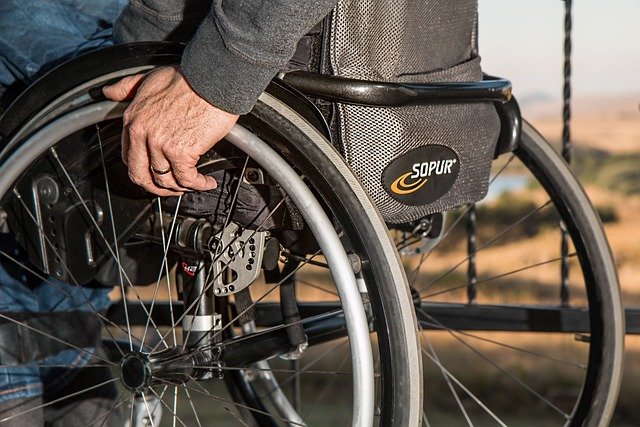Making Home Safer: Essential Guide to Ramps for Seniors
Mobility ramps make daily life safer and easier for seniors. Whether at home or in public, these aids help reduce the risk of falls and support independence. Learn about different ramp types, installation tips, and features to consider for maximum comfort and safety.

Types of Home Ramps for Seniors
The first step in selecting the right ramp is understanding the various types available. Permanent ramps are typically constructed from concrete, wood, or aluminum and are fixed structures attached to the home. These offer stability and durability for long-term use. Modular ramps, made from aluminum or steel, provide a semi-permanent solution that can be reconfigured or removed if needed, making them ideal for renters or temporary situations. Portable ramps offer maximum flexibility—these lightweight options can be folded, telescoped, or rolled for storage and transportation, perfect for seniors who frequently visit different locations or have limited space for installation.
Key Features to Look for in Senior Ramps
When selecting ramps for seniors, safety features should be the primary consideration. Non-slip surfaces provide crucial traction, especially during wet weather. Handrails offer additional stability and support while navigating the ramp. The slope ratio is particularly important—the Americans with Disabilities Act (ADA) recommends a 1:12 ratio, meaning for every inch of height, the ramp should extend 12 inches in length. This gradual incline minimizes strain and reduces fall risk. Weight capacity is another critical factor, as the ramp must safely support the combined weight of the user and any mobility device they use.
Installation Considerations for Home Ramps
Professional installation ensures safety and compliance with local building codes, which often have specific requirements for permanent ramps. While DIY installation might seem cost-effective, improper setup can create safety hazards. Before installation, proper measurements are essential—consider the total rise (vertical height from ground to entrance), available space for the ramp’s length, and transition points where the ramp meets existing surfaces. Weather protection features like covered entrances or awnings can prolong the ramp’s lifespan and provide safer usage during inclement weather. Additionally, proper maintenance, including regular inspections for loose parts or surface damage, will ensure continued safe operation.
Portable vs. Permanent Ramp Solutions
Portable ramps offer significant advantages for seniors with changing needs or those who travel frequently. These lightweight options can be deployed when needed and stored away when not in use, making them ideal for occasional use or visitors with mobility challenges. However, permanent ramps provide superior stability and often better aesthetic integration with the home’s exterior. They eliminate the need to set up and remove the ramp for each use, which can be cumbersome for caregivers or seniors themselves. The decision between portable and permanent solutions should consider factors like expected duration of need, available space, budget constraints, and whether the senior owns or rents their home.
Cost Considerations for Senior Ramps
The investment in a senior ramp varies significantly based on type, material, and installation requirements. Portable threshold ramps can start as low as $50-$200, while lightweight folding ramps typically range from $100-$500 depending on length and weight capacity. Semi-permanent modular aluminum ramps represent a middle-tier option, generally costing between $1,000-$4,000 for a comprehensive system. Permanent custom wooden or concrete ramps represent the highest investment, ranging from $3,500-$8,000 or more for complex installations with specific features or challenging terrain.
| Ramp Type | Typical Cost Range | Lifespan | Best For |
|---|---|---|---|
| Portable Threshold Ramps | $50-$200 | 3-5 years | Minor elevation changes, temporary use |
| Folding/Suitcase Ramps | $100-$500 | 5-7 years | Transport between locations, occasional use |
| Modular Aluminum Systems | $1,000-$4,000 | 8-15 years | Semi-permanent installations, rentals |
| Custom Wooden Ramps | $3,500-$6,000 | 10-15 years with maintenance | Permanent home modifications |
| Concrete Ramps | $5,000-$8,000+ | 20+ years | Permanent installations with highest durability |
Prices, rates, or cost estimates mentioned in this article are based on the latest available information but may change over time. Independent research is advised before making financial decisions.
Funding Resources for Senior Ramps
Many seniors are unaware of financial assistance options that can help cover ramp costs. Medicare typically doesn’t cover home modifications like ramps, but Medicaid waiver programs in many states will fund these accessibility improvements. The Department of Veterans Affairs offers Home Improvements and Structural Alterations (HISA) grants for eligible veterans. Local aging agencies, nonprofits like Rebuilding Together, and organizations such as the National Council on Aging can provide information about grants or low-interest loans. Some states offer tax deductions for accessibility modifications, and certain insurance policies may provide partial coverage when medically necessary. Exploring these options can significantly reduce out-of-pocket expenses for families.
Senior ramps represent more than just physical structures—they provide independence, safety, and peace of mind for elderly individuals and their caregivers. The right ramp solution, properly installed and maintained, can enable seniors to remain in their homes longer while reducing fall risks and improving overall quality of life. By carefully considering the specific needs, space constraints, and budget available, families can select an appropriate ramp solution that enhances mobility and preserves dignity for their elderly loved ones.
This article is for informational purposes only and should not be considered medical advice. Please consult a qualified healthcare professional for personalized guidance and treatment.




